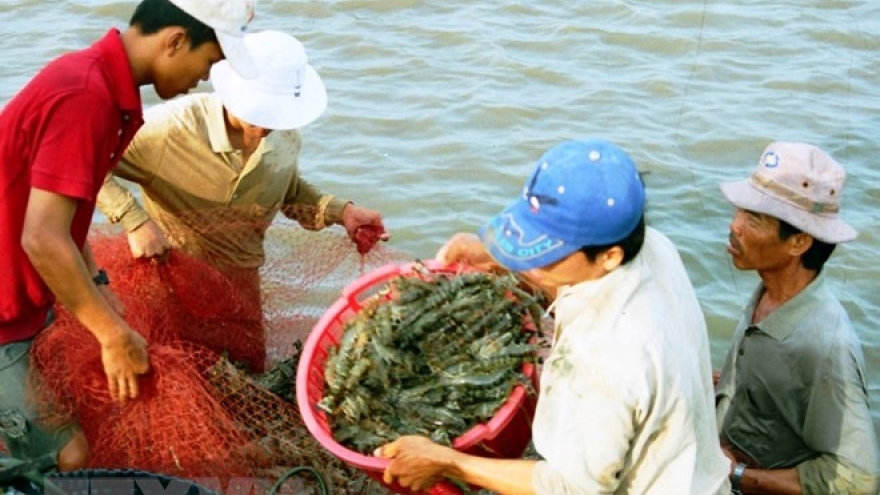Bottlenecks hinder shrimp products from int’l competition
VOV.VN - Fragmented production and a lack of fruitful linkages between entities have made it difficult for them to meet strict requirements set by importers while harming competitiveness of shrimp exports, insiders have claimed.
 |
| Vietnam has set a target of reaping US$4.2 billion from shrimp exports in 2019. |
At the Vietnam Private Sector Economic Forum held this week, Tran Dinh Luan, deputy head of the Directorate of Fisheries under the Ministry of Agriculture and Rural Development, said that the local shrimp industry achieved a total output of 760,000 tons last year, including some 300,000 tons of sugpo prawns, while it racked up US$3.6 billion from exports.
Luan further said that although the shrimp industry enjoys many advantages, it is facing a number of challenges caused by climate change. Moreover, at least 70 per cent of the total shrimp cultivation area is of small scale, posing difficulties for shrimp products to penetrate more deeply into the global market and meet the traceability requirement of importers.
"Fragmented production, weak linkages, and limited brood stock supply are among the reasons that push up production costs and restrict the competitiveness of shrimp products," he said.
The official cited statistics collected from 74 production linkages in the southern provinces of Ca Mau, Bac Lieu, and Soc Trang - the leading localities in terms of shrimp production - as showing that the linkages enabled the participants to increase their profits and to slash investment costs by 10-30 per cent, thus keeping selling prices at stable levels.
Luan emphasized such linkages as an indispensable part of the shrimp industry and the agricultural sector at large, adding that the shrimp sector will pilot the implementation of a complete chain linkage that gathers together inputs, researchers, enterprises, commercial banks, and others.
An insurance mechanism is needed for the chain linkage to build up brands and improve competitiveness for shrimp products, he noted.
Le Van Quang, Vice Chairman of the Vietnam Association of Seafood Exporters and Producers, said that small-scale production has emerged as the biggest bottleneck for the shrimp industry as it makes product traceability impossible. This leads to issues such as failure to gain international certifications for shrimp products.
Having spent many years seeking for such international certifications, Quang, who is also chairman of Minh Phu Seafood Corporation, revealed that he has managed to set up a joint stock firm. It gets shrimp farmers to provide land for shrimp aquaculture, as well as raise and sell shrimps on their own land to the company.
This solution helps to end the long-standing fragmented production of local shrimp farming, thus making traceability possible as well as obtaining international certifications.
Under a national action plan aimed to further boost the development of the shrimp industry, Vietnam expects to rake in US$10 billion from shrimp exports by 2025; of which US$8.4 billion would be contributed by sugpo prawns and whiteleg shrimps. For this year along, the country has set a target of reaping US$4.2 billion from shrimp exports.
During a March conference launching missions for the shrimp industry during 2019, Nguyen Xuan Cuong, Minister of Agriculture and Rural Development, said that the export turnover of US$4.2 billion is a high and challenging target as the figure is set at nearly 10 per cent higher than the export value of last year.
In order to achieve the goal, the shrimp industry must focus on solutions aimed to build up a closed production chain which connects farmers to co-operatives and businesses, Cuong added.
The minister appealed for strict compliance with the standardized processes of shrimp farming, feeding, and environmental treatment.


